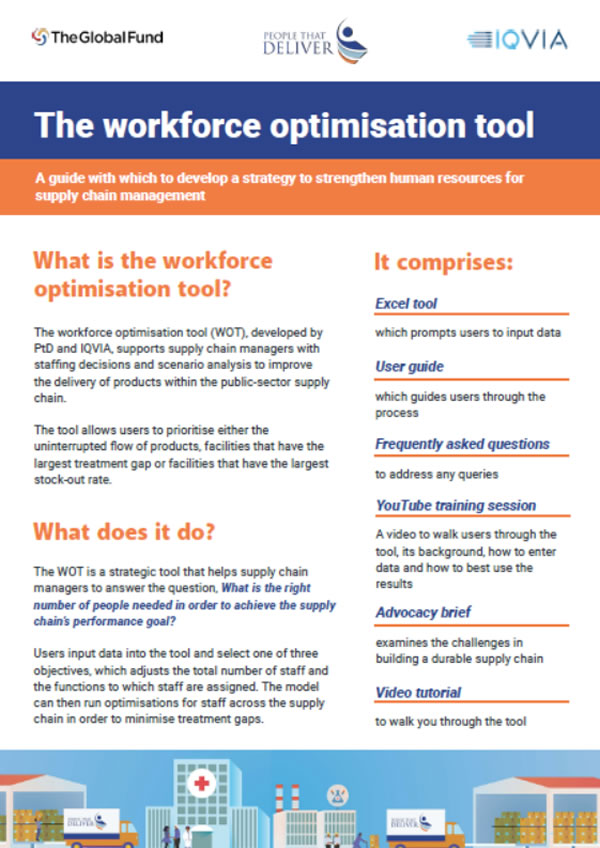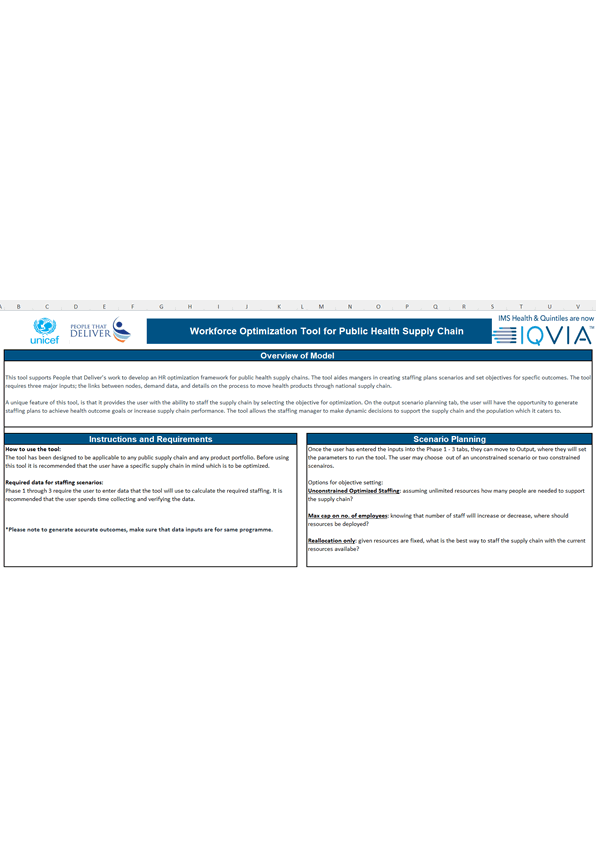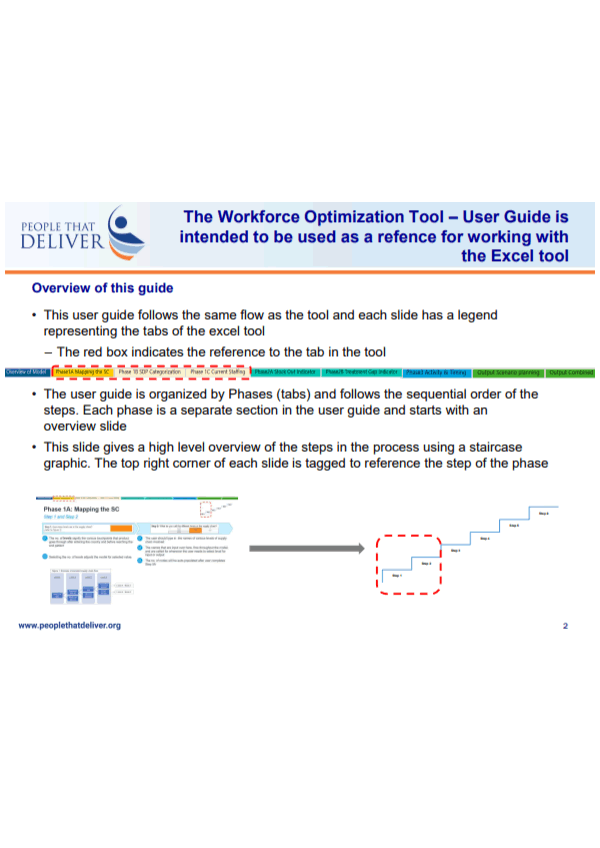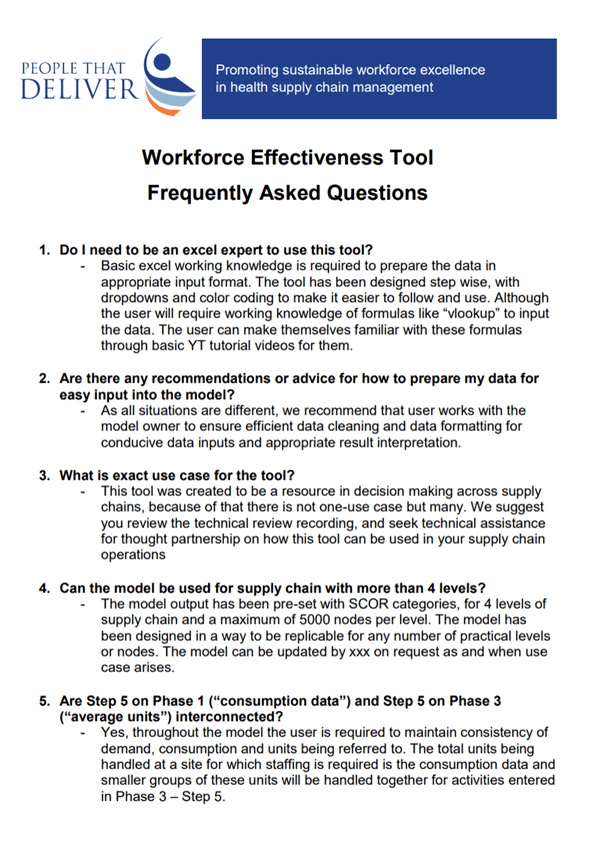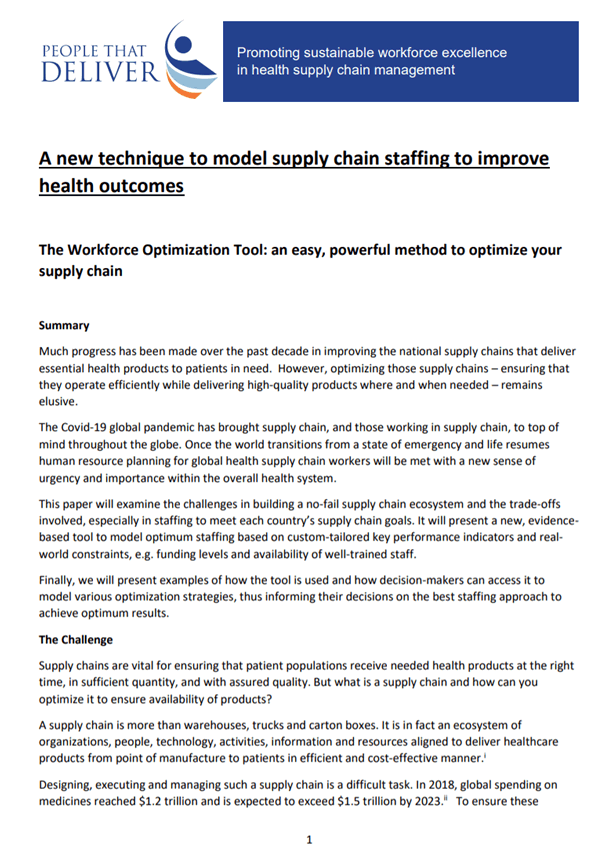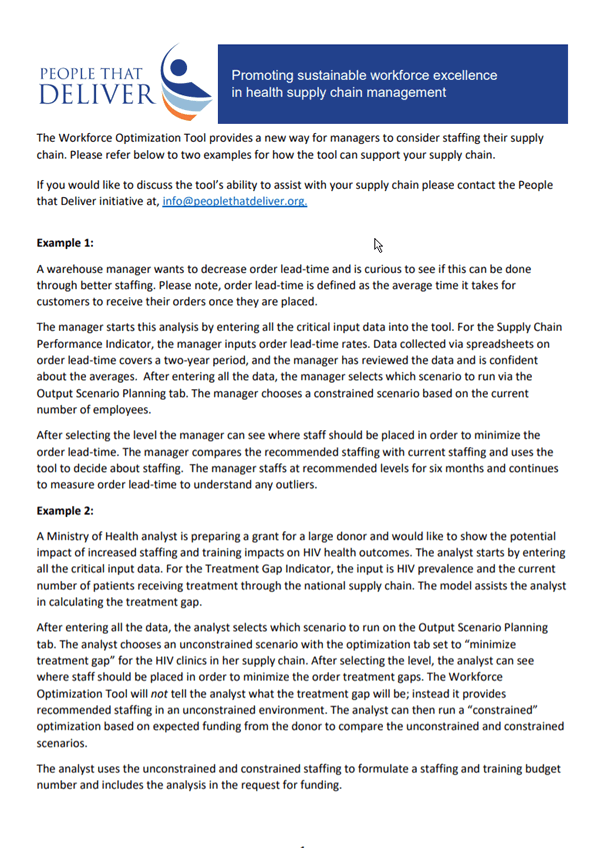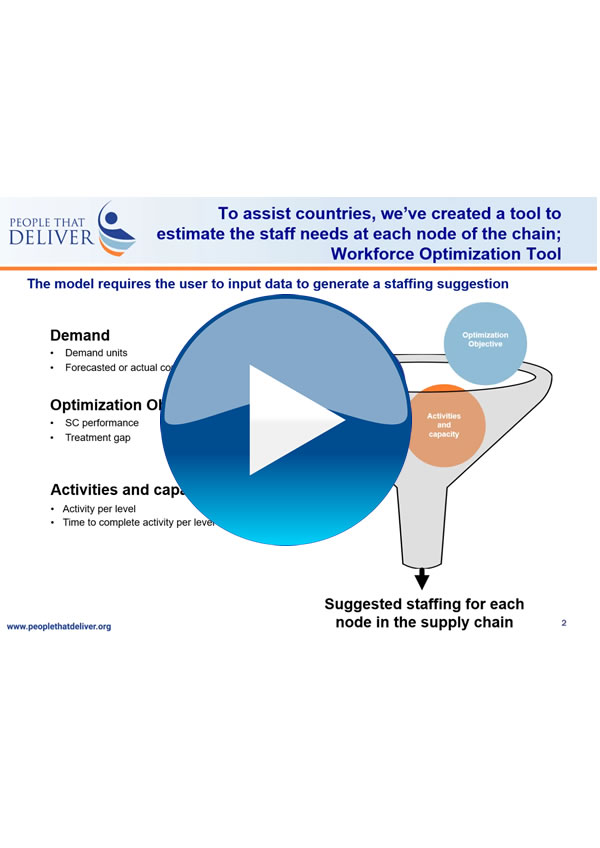Improving supply chains requires both the appropriate number of supply chain workers and that these workers are placed in the right position and level within the supply chain. Recognising that this is might be a challenge in the host-country supply chains they support, USAID and the Global Fund for AIDS, Tuberculosis, and Malaria (GFATM) funded PtD in the beginning of 2018 to develop a tool to calculate the optimal number and cadre of supply chain personnel needed to improve an organisation’s supply chain performance and/or health outcomes.
Based on its work with individual countries PtD was concerned that supply chain staffing shortages, and misallocated staff, could be contributing to gaps in treatment as well as stockouts at the service delivery point. PtD wanted to provide the community with a resource that went beyond existing human resources for health tools which mainly use activity-based assumptions for primary care settings. They hypothesised that if managers had a tool to consider these two factors as well as volume and capacity, managers could create staffing strategies that were optimised to improve health outcomes and supply chain performance.
The resulting tool, the workforce optimisation tool (WOT), is different from other tools the supply chain community has seen because it allows users to set different objectives to improve supply chain performance and/or health outcomes, as well as staff for demand. This provides managers with an easy-to-use tool to model various scenarios based on local needs and resources. It was created to be a resource in decision making across supply chains; because of that there is not one-use case but many.
Workforce optimisation tool one pager
In a nutshell what the WOT is and who it is for.

